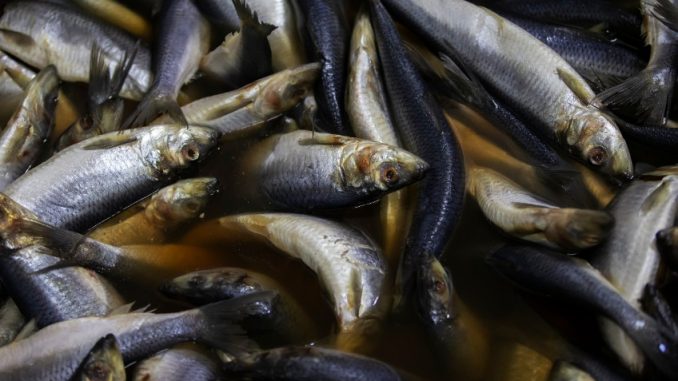
Fermented fish products usually come in two forms, pastes and sauces but you could add a third which is salted fish too. They’ve been consumed for centuries. As with all fermented foods, fermentation it self is a great way of preserving produce as well as altering the taste of the food and making it more palatable and nutritionally sound. Back in ancient times it was a way to provide people who lived inland, far away from water courses, with a consistent nutritionally viable source of protein mainly. There was a then a ready commercial economic benefit in developing fermentation as a preservation method if it could feed a population that could extend its reach into less well-served communities.
The development of fermented fish is world-wide but there are some regions which have practiced it as a culture more than others. Many South-Eastern countries such as Vietnam, Thailand, Kampuchea and Indonesia to name but a few have all developed their own expertise and unique flavour from various types of fermented fish foods. Where would we be today without the incredible range of fish sauces if we could not recognise that the cuisine of that region is so rich and diverse. In some areas of that globe, fermented fish has become a staple food and that cannot be underestimated in culture. You can find extraordinary examples of fish too in Europe an Africa. The countries of Northern Europe have also been fermenting fish for Worcestershire sauce type products where they are infamous as condiments.
Whilst we tend to look at South-East Asia it is to the Romans that we can draw the first inspiration. They elevated fish sauce to new heights with garum. This was made from the blood and viscera of mackerel that was caught throughout the Mediterranean and Atlantic. It’s production can be traced to towns and cities on the coastal regions of Spain for example. In ancient Greece, a similar fish sauce made from the same tissues of tunny was consumed with relish and was known as aimeteon. In the 19th Centurry, Italy and Greece were producing Botargue and Ootarides respectively.
When you come round to South-East Asia, then look no further than Vietnam which offers the world Nuoc-mam which is a sauce made from small silver fish caught in the Info-China and South China seas. These fish are fermented in earthenware containers with high levels of salt for many months. The clear amber liquid comes to the surface and is drawn off into brown bottles with beautiful colourful labeling. It is treated with reverence and forms an extraordinary gift. Take a look at Stinky Mandarin fish – it has a flavour unlike any other condiment or sauce you might imagine. Unpalatable to some, others consider it the height of sensory pleasure and deliciousness. To the south of Vietnam are the islands of the Phillippines. Here you find Burong dalag which is a fish and rice food relying on a particular fish called the mudfish (Ophicephalus striatus) otherwise called dalag.
Move north to Japan and you can experience the taste of shoittsuru which is also known as fish soy and it may even have developed before true soy sauce was ever thought of.
The number of fish sauces is enormous but fish pastes are even more popular where they are consumed as condiments. Generally, the fermentation time for a paste is much shorter than for a sauce. Have you ever tried a pickled fish from Sri Lanka or southern India? You may have tried Colombo curd fish. Here the fish is mixed with lots of salt in a 3:1 ratio and stored in concrete tanks. Tamarind fruit is added and the mixture pickled.
Fish Sauce
A typical fish sauce is a translucent amber liquid with a distinctive unique flavour. It is generally formed by an extended fermentation of between 12 and 18 months in a highly salty environment (hypersaline) usually between 25 per cent and 30 per cent NaCl (Siddegowda et al., 2016). Much of the fermentation involves hydrolysis of fish proteins catalysed by fish proteases often produced by halophilic bacteria. The umami and unqie complex flavour comes from these amino acids and particular peptides.
As in fish sauces and salty pastes, halophilic bacteria are the main microorganisms in fish fermentation. The moderately halophilic bacteria are Virgibacillus, Tetragenococcus, Lentibacillus, and Staphylococcus. Many of these are actually from the achaea bacterial group. These represent 74% of the total halophilic microbial community in any salty fermented fish product.
References
, , & (2016). Bacteriological properties and health related biochemical components of fermented fish sauce: An overview. Food Review International, 32, pp. 203–229 (Article).
Leave a Reply